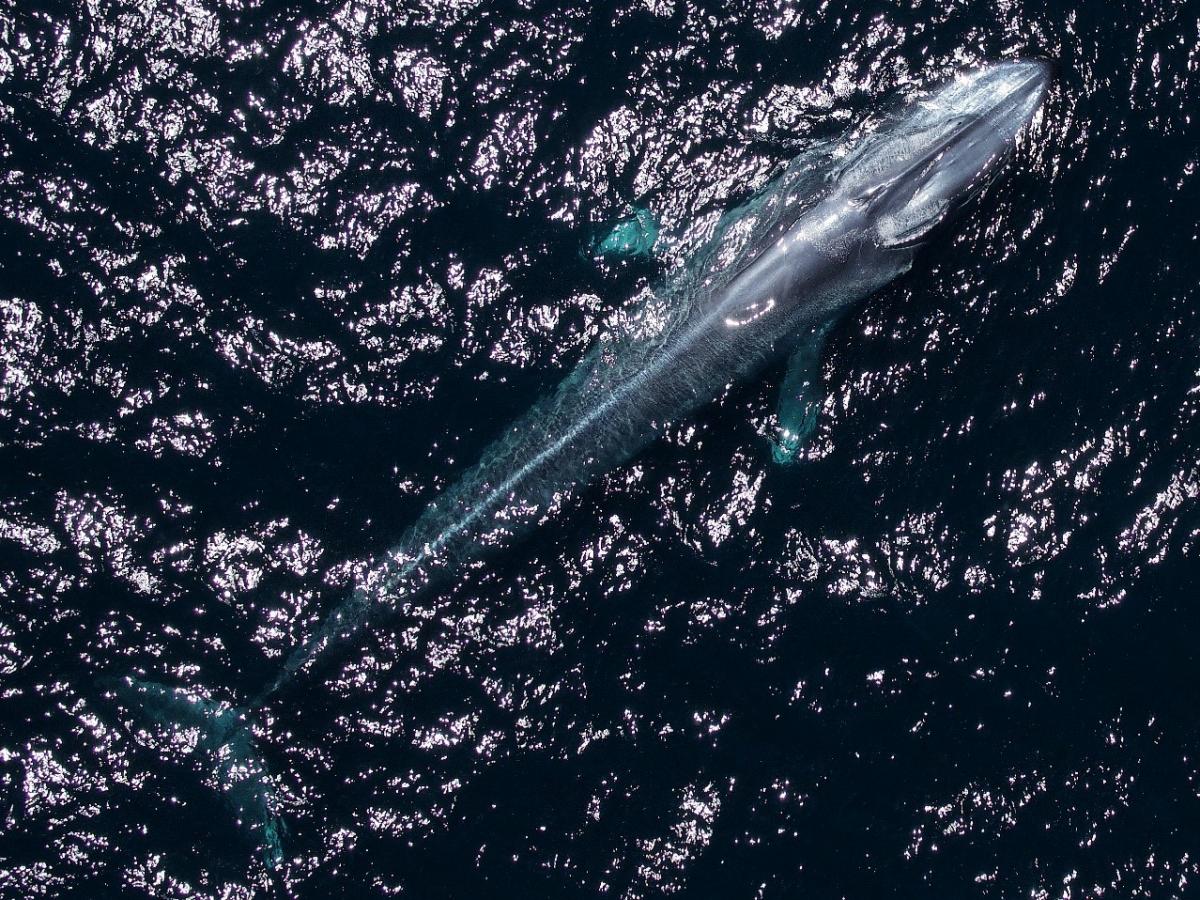07-19-2021 17:07

Fluke of CRC-992.
A short cruise involving a team including Cascadia Research, NOAA, Stanford University, and SR3 identified a blue whale off LA/Long Beach Harbor on 2 and 3 July 2019 which provided some very interesting insights. The 4-day cruise conducted with the Channel Islands Marine Sanctuary vessel Shearwater and one of Cascadia’s RHIBs was completed on 4 July 2019 and was just a few days and not in the best weather. The blue whale encountered (which some locals had started calling Kinko) was a well-known individual in Cascadia’s catalog of identified blue whales (CRC-992). From past samples collected she was a known female.
The effort on 2-3 July yielded several key insights into this whale:
-
A UAS team with NOAA and SR3 conducted a flight over the whale (see image below) and were able to determine she was 74-feet (22.6 m) long.
-
An archival dive & GPS tag was deployed on the whale for a couple of hours and recorded she was diving to >1,000-feet which is unusually deep for a blue whale. It also revealed she was feeding making repeated lunges into what the echosounder revealed was a krill layer just over 800-feet deep. These deep feeding dives took 19 and a half minutes.
The more than 100 sightings from past years of this individual showed she was a very regular returning whale to Southern California. Some key insights into her history include:
-
She was first identified on 8 Sept 1994 by John Calambokidis and Kristin Rasmussen (working off a Cascadia RHIB and off the Condor) in the Santa Barbara Channel.
-
She had also been identified at least three times in Mexico by collaborating researchers, as early as March 2007 in the Gulf of California and in December 2014 off the NW Coast of Baja, both known areas blue whales go to feed in winter months.
-
In 2011 she gave birth to a calf (from June through September) in the LA area but unfortunately her calf (CRC-2810) has not been seen since and may not have survived.
-
In September 2010 she had a tag attached to her with suction cups as part of the SOCAL Behavioral Response Study and so there will be some ability to compare detailed aspects of her underwater behavior with the most recent deployment.
-
More than 40 of the encounters going back to 2011 and from June to September have come from a partnership with Aquarium of the Pacific and Harbor Breeze Cruises where naturalists collect data and photographs of whales in the LA/Long Beach area.
-
This whale is probably one of the more exposed blue whales to the high risk of ship strikes in S California where many whale feeding areas overlap with the busiest shipping lanes in the US.
-
One set of past identifications in 2016 (16-19 July) near the shipping lanes in the Santa Barbara Channel also came as part of a similar cruise with the NOAA vessel Shearwater and Cascadia and demonstrate the value of this partnership.

Image by NOAA Southwest Fisheries Science Center and SR3: SeaLife Response, Rehabilitation and Research, collected using an unmanned hexacopter flown at >150ft.

Data from tag deployed on 992 on 2 July 2019 showing deep dive to about 300 m with feeding lunges (dark boxes) indicated upward transits and speed (left axis) showing rapid acceleration and deceleration associated with feeding lunges.

Echosounder (200 KHz) section showing surface at top, bottom as lower line ranging from 390-450 m, and faint krill layer in middle at 230-268 m.

Left side of CRC-992 showing both markings and remora sucker fish near dorsal fin of whale.
All research was conducted under a scientific research permit from NMFS under the marine Mammal Protection Act and Endangered Species Act (permit #1901 and 21678).
John Calambokidis, Cascadia Research, 360-280-8349, calambokidis@CascadiaResearch.org